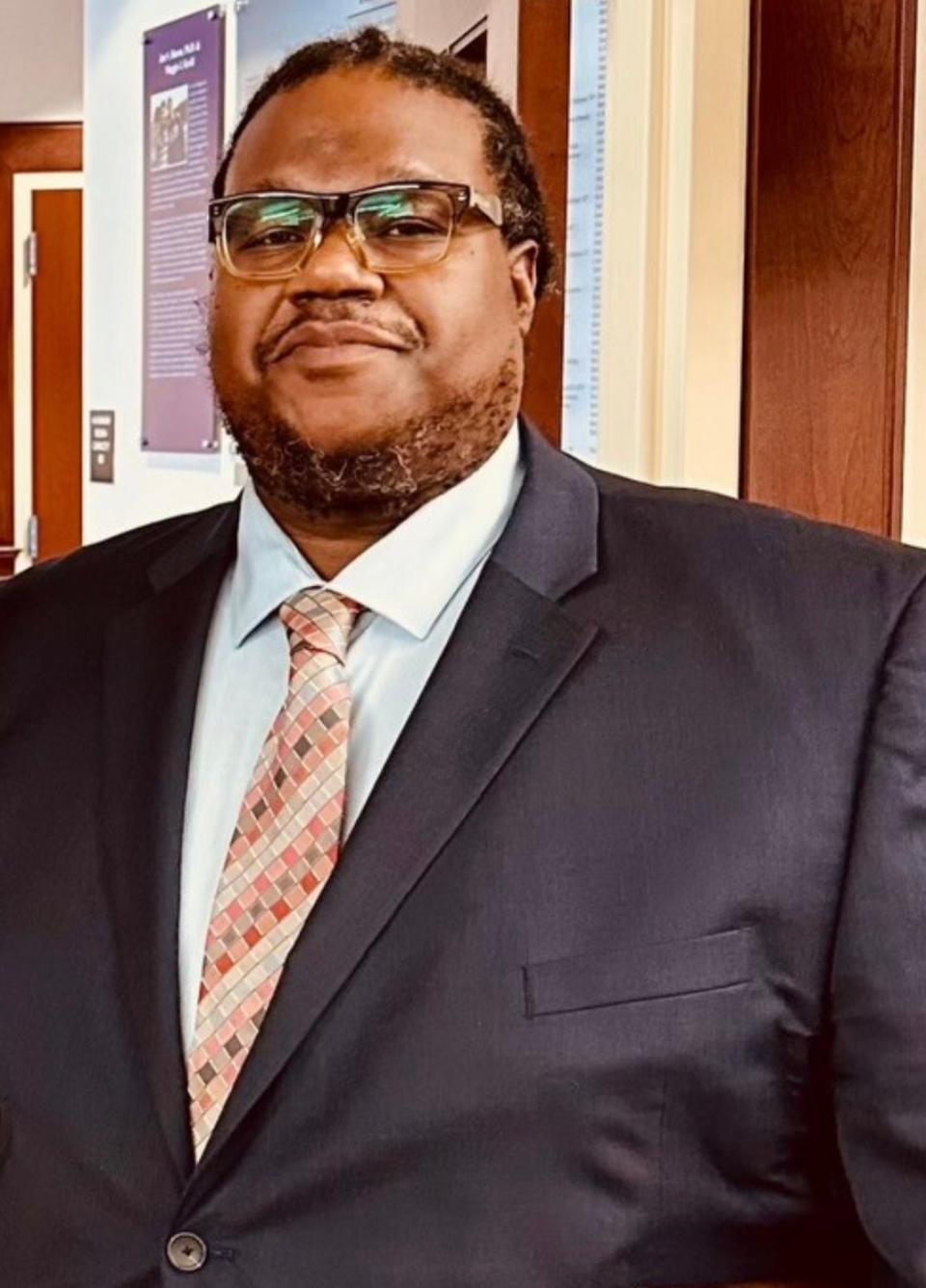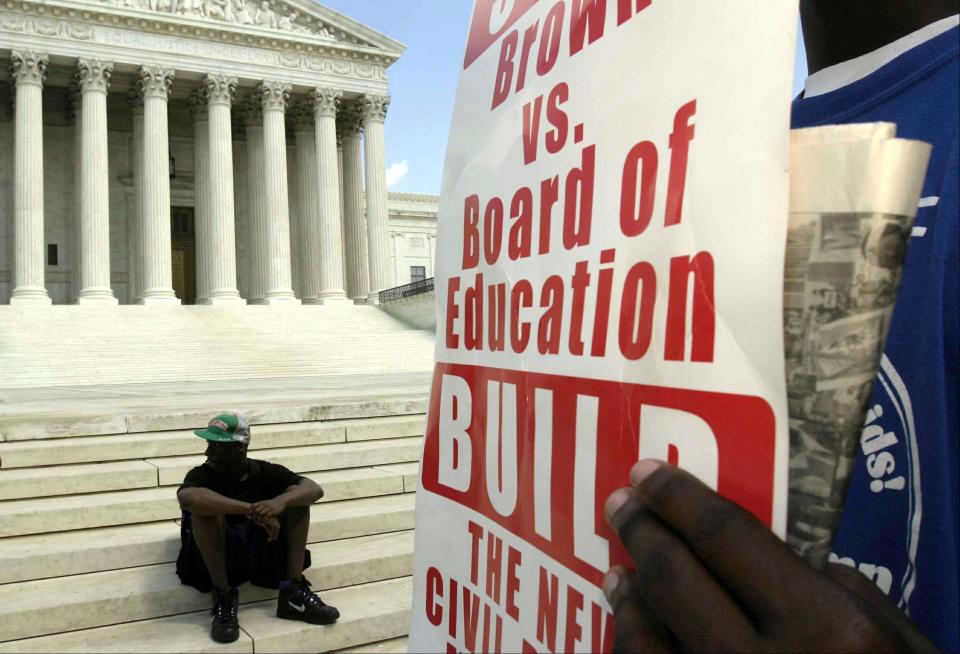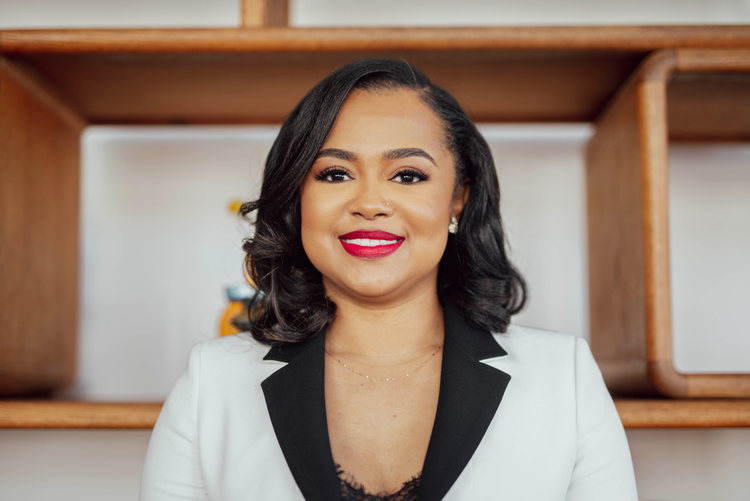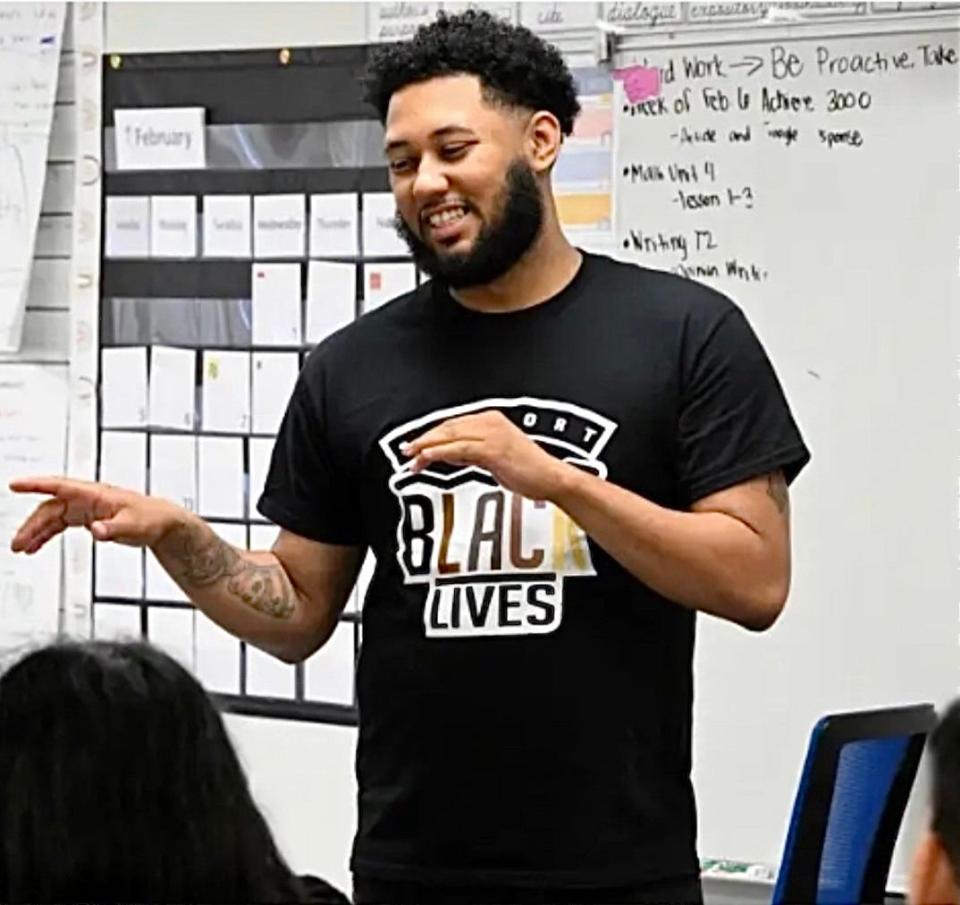There's a surprising reason why many schools don't have a single Black teacher

Middle school educator Jeffrey Lee is the only Black male English teacher at his school, which serves about 815 students northwest of Philadelphia.
"It can be a lonely existence. I almost feel like the last dinosaur that roamed the Earth," Lee said. "I have students say, 'You’re the first African American or male teacher of color' they’ve ever had."
Seventy years after a landmark U.S. Supreme Court decision outlawing segregation in public schools, Lee's story illustrates a lingering imbalance at schools nationwide: Students of color now make up more than half of America's students, but the number of teachers and principals of color has not kept apace.
An analysis of state-by-state data from The New Teacher Project, a nonprofit organization working to redesign education to meet the needs of students of color and students living in poverty, shows that across a majority of U.S. campuses, nearly one-fourth of public schools did not have an educator of color on staff. Meanwhile, students of color were the majority at public schools.
Teacher representation hasn't kept up: about one-fourth of the nation's teachers identified as people of color, according to the nonprofit's analysis. Research conducted by scholars has shown the imbalance impedes learning, since students across the board and especially students of color, do better academically when they have teachers from diverse backgrounds.
While the reasons for the disparities are varied, education experts told USA TODAY the imbalance is part of a legacy, an unintended consequence, of the Brown v. Board of Education ruling.

How Brown v. Board contributed to teacher diversity imbalance
On May 17, 1954, the Supreme Court ruled that separating children based on race in public schools was inherently unequal and violated the right to Equal Protection under the 14th Amendment.
Outlawing segregation in schools was a victory for the civil rights movement, but it enraged Southern white leaders, school superintendents, parents and others.
Before the Brown v. Board ruling, Black teachers made up 35 to 50 percent of the workforce in the 17 states with segregated school systems, Education Week reported. Following the decision, many Black schools closed, thousands of Black educators were pushed out of the field and less-qualified white teachers replaced them, wrote Leslie Fenwick, the dean emerita of the Howard University School of Education and a professor of education policy, in an op-ed for Politico.

The precipitous drop in the number of Black educators in the workforce was an unintended consequence of the ruling, said Tequilla Brownie, CEO of the nonprofit organization The New Teacher Project.
"Our nation’s current lack of educator diversity is a direct result of Brown (v. Board)," Brownie said. "It had a devastating effect not only on the school building and its demographics but also on Black communities and families. Educators of color were the lynchpin to creating the middle class in communities."
Diversity in the workforce also limited opportunities for Latino educators after the 1947 Mendez vs. Westminster ruling, in which a circuit judge in California ruled the forced segregation among Mexican American and white students was unconstitutional. That case set a precedent for Brown v. Board of Education, according to the Zinn Education Project, a collaboration of historical content from the groups Rethinking Schools and Teaching for Change.
There would be reverberations from both cases for decades to come.

Many other factors propel the teacher diversity imbalance
Beyond the landmark events, several factors limited access to the workforce for teachers of color, preventing them from entering the workforce, making their careers as educators difficult to sustain or pushing them out of the field, experts told USA TODAY. They include:
Teacher layoffs: Schools are laying off teachers en masse as they prepare to lose COVID-19 funding in the fall. Many schools hired educators of color in recent years who work at schools with "last in, first out" policies where the last teachers hired are laid off will be cut from their roles. (The financial cliff is expected to affect students of color and students of low-income communities most, research from the national nonprofit the Brookings Institution shows.)
Burnout and frustration: Over the last several years, some teachers of color have left the profession, citing burnout and low morale, pandemic-related stressors and a toxic climate amid political attacks on schools. Educators and education leaders of color conveyed to Sharhonda Bossier, CEO of Education Leaders of Color, that they are also worried about school safety issues, such as shootings and increased misbehavior among kids.
Financial concerns: Low pay, costly teacher training programs and difficult exams have prevented people of color interested in teaching from entering the workforce, several education experts told USA TODAY.
A lack of representation in leadership roles: U.S. schools face a pipeline issue, said Jean Desravines, CEO of New Leaders, a national nonprofit organization whose mission is to train and develop "transformational, equity-minded" school leaders. Teachers of color are being blocked from leadership roles, which means they're missing the chance to lift up others, Desravines said.
Diversity, equity and inclusion program cuts: Conservative lawmakers passed measures requiring schools to axe their diversity, equity and inclusion programs which resulted in educators of color being cut from those jobs.
What's needed to close the gap?
To close the gap, American schools would need to hire about 1 million teachers of color and 30,000 leaders of color, according to an analysis of federal data from the school year 2017-2018. The analysis was published by the One Million Teachers of Color Campaign, which was created by a consortium of education organizations advocating for an increase in teacher diversity.
Education experts have outlined a number of ways the federal government, states and schools can work together to improve access for educators of color.
One approach would be to change how schools conduct layoffs: Some want to see schools remove "last in, first out" layoff policies to avoid pushing out teachers of color who are newly hired when funds disappear.
States could also fund programs that help recruit teachers of color, including "grow your own" programs which incentivize paraprofessionals to become teachers at the schools where they're already employed. Another solution: districts could fund teacher residencies that allow people with a bachelor's degree to teach alongside a teacher in a classroom while working to earn their certification or completing fellowships and apprenticeships.
Another route to fixing the imbalance would be to pay teachers better. Some people of color are worried that encouraging young people to enter into a teaching career with low-paying jobs will exacerbate the racial wealth gap, Bossier said. Bossier left her position as a teacher years ago, in part because of the earning gap she experienced among her peers. While working as a teacher, she recalled, she had to wait tables to supplement her income.

It would also help to invest in recruiting, training and hiring school leaders of color who would be more likely to hire, promote and support teachers whose backgrounds align with the demographics of their students, Desravines said.
One such funding source is readily available, according to Education Department Secretary Miguel Cardona. Cardona has also repeatedly called on states to spend COVID-19 funds to increase diversity in the teaching workforce. Some states have made investments in the teacher pipeline to close these gaps over the last few years. However, those funds are drying up soon – which leaves the trajectory of success uncertain.
One method experiencing success
In California, which has invested in teacher residency programs, Peter Watts' Village Initiative program provides Black male teachers with housing, mentorship and resources so they can teach in Los Angeles neighborhoods they live in and connect with the kids in their classrooms without worrying about financial strife.
One of the teachers in the program teaches U.S. history at a charter school in the Watts neighborhood of Los Angeles and can afford to live there because of financial and mentorship support from the program, according to Watts from the Village Initiative.
Fontae Smith said he was inspired to pursue the role by the Black male teachers in the schools he grew up attending. Now, he's one of the only Black male educators at the school where he teaches – in a similar position to Lee at the middle school in Pennsylvania.

Smith and Lee both said they'd experienced uncomfortable comments or remarks about their race from students in their classrooms, but they felt the role was rewarding and could expose kids to Black male leaders they respected. Black teachers inspired both of them to enter the workforce.
"You have to be the type of person that's like, 'It's bigger than me,'" Smith said. He said it keeps him going to know he may inspire as many as 150 students each year and they will go on to inspire others.
"It spreads like wildfire," Smith said.
Contact Kayla Jimenez at kjimenez@usatoday.com. Follow her on X at @kaylajjimenez.
This article originally appeared on USA TODAY: U.S. classrooms are more diverse than ever. The teacher's lounge is not.

